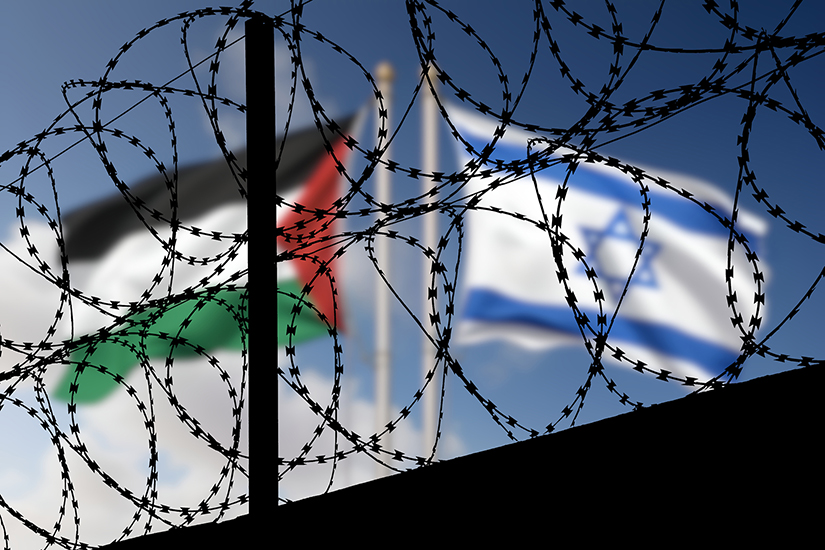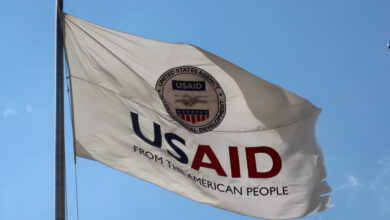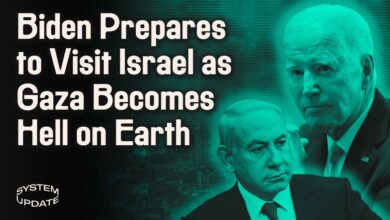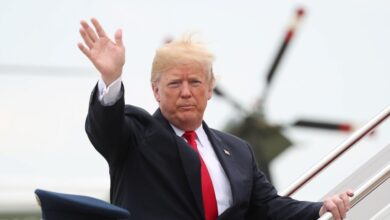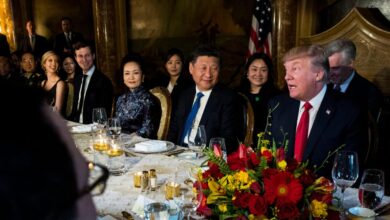Iran Opens Nuclear Talks A Crucial Moment
Iran says it is open to talks about concerns about militarization of its nuclear program, sparking a crucial moment in international relations. This announcement signals a potential path towards de-escalation, but also raises complex questions about the motivations behind this move and the potential outcomes of any negotiations. Understanding the historical context, potential concerns, and possible negotiation strategies is vital for assessing the significance of this development.
Iran’s nuclear program has been a source of global tension for decades. Various international agreements and treaties have attempted to regulate its activities, but concerns persist regarding the potential for militarization. This article delves into the historical context, potential motivations, and possible outcomes of these crucial talks, exploring the impact on regional stability and the international community’s response.
Background on Iranian Nuclear Program
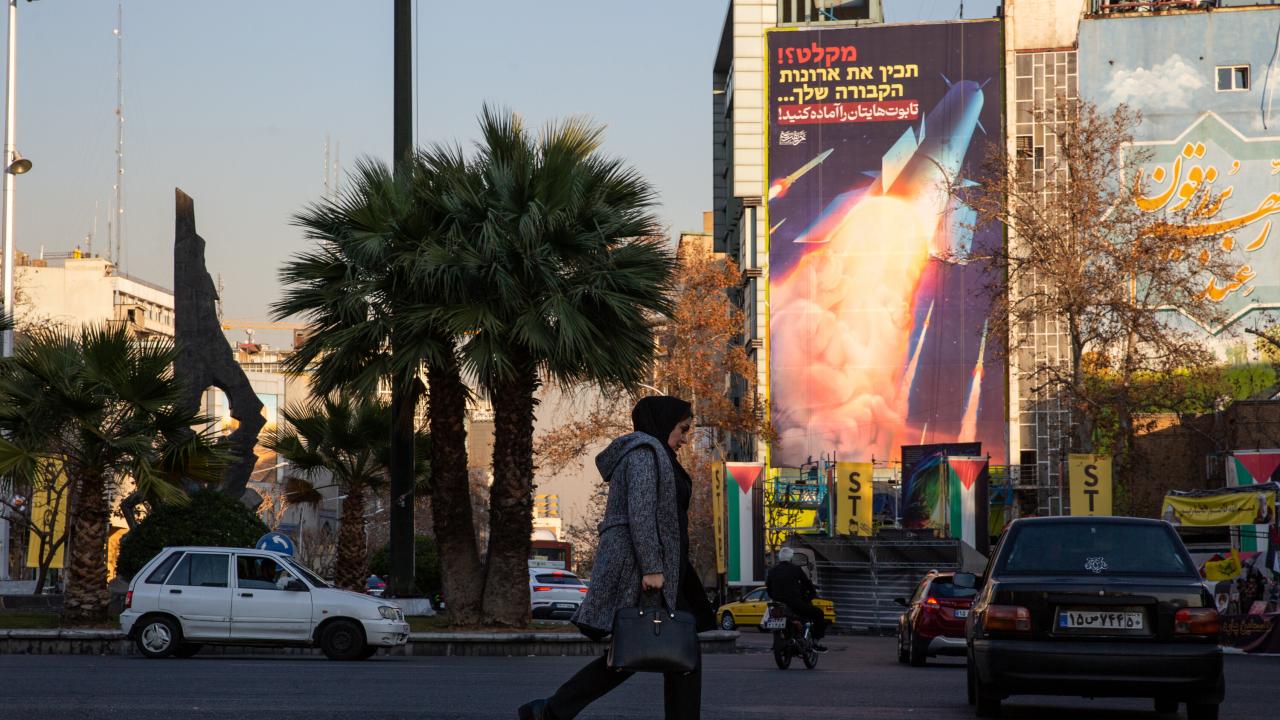
Iran’s nuclear program, a complex issue with deep historical roots, has been a source of international tension and negotiation for decades. From its initial stages to the current geopolitical climate, the program’s development is intertwined with regional dynamics and global security concerns. Understanding the historical context, international agreements, and specific concerns surrounding militarization is crucial for a nuanced perspective on this multifaceted issue.Iran’s nuclear program began in the 1950s, initially with the assistance of the United States.
This cooperation aimed to develop nuclear energy for peaceful purposes. However, the program’s trajectory changed significantly with the Iranian Revolution in 1979, leading to shifts in international relations and a more ambiguous stance on the program’s ultimate goals.
Historical Overview of the Iranian Nuclear Program
The early phases of the program saw collaboration with Western nations, with a focus on civilian applications. However, evolving political circumstances and shifting international relations shaped the program’s future trajectory. The 1979 Iranian Revolution marked a turning point, altering the country’s relations with the West and potentially influencing the program’s direction. Subsequent years saw international scrutiny and growing concerns regarding the program’s intentions.
Key International Agreements and Treaties
Several international agreements and treaties have sought to regulate nuclear activities in the region, and Iran’s compliance with these accords has been a significant point of contention. The Non-Proliferation Treaty (NPT), a cornerstone of global nuclear security, Artikels the obligations of signatory nations, including Iran. The Joint Comprehensive Plan of Action (JCPOA), a landmark agreement reached in 2015, aimed to limit Iran’s nuclear activities in exchange for the lifting of sanctions.
Specific Concerns Regarding Militarization
A primary concern regarding Iran’s nuclear program is the potential for its militarization. This concern centers on the possibility of Iran developing nuclear weapons, which would significantly alter the regional and global power balance, potentially triggering an arms race. The implications of such a development are potentially devastating, including the risk of nuclear conflict. This concern is further fueled by the program’s evolving capabilities and the lack of transparency regarding certain aspects of the program.
Past Instances of Iranian Statements Regarding Nuclear Negotiations
Iranian statements regarding nuclear negotiations have reflected a complex interplay of national interests and international pressures. These statements, often conveyed through official channels or by prominent figures, have varied in tone and specifics, depending on the context of the negotiation. Historical examples demonstrate the ebb and flow of diplomatic efforts and the various positions taken by Iran during these interactions.
An analysis of these statements reveals both the complexities of the issue and the challenges of achieving a lasting resolution.
Potential Motivations and Concerns
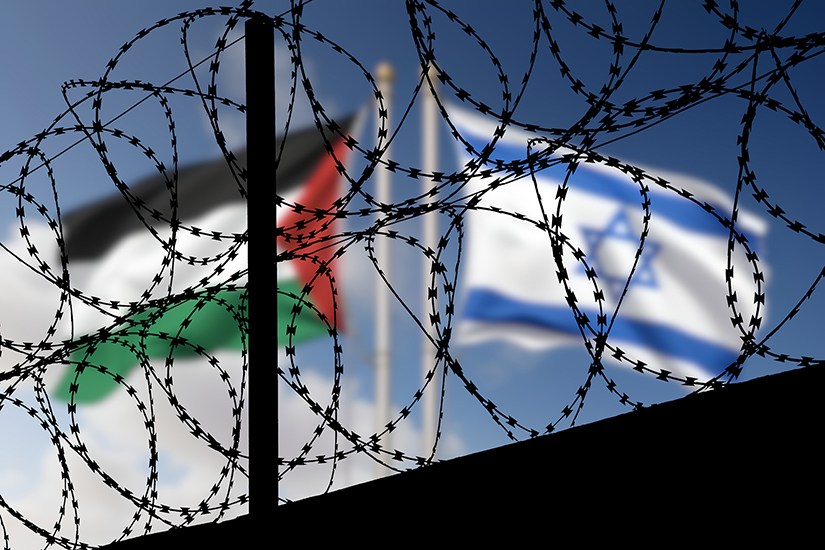
Iran’s recent openness to talks regarding the militarization of its nuclear program raises several crucial questions. This apparent willingness could stem from various motivations, ranging from a desire to alleviate international pressure to a strategic calculation aimed at achieving specific regional or global objectives. Conversely, the potential concerns from international actors are significant, highlighting the risks associated with a militarized Iranian nuclear program for regional stability and global security.The complex interplay of domestic and international factors necessitates a careful analysis of Iran’s motivations and the potential consequences of its nuclear program.
The potential ramifications for regional security and global power dynamics are substantial, demanding a nuanced understanding of the interplay between Iran’s strategic interests and the international community’s security concerns.
Possible Iranian Motivations
Iran’s motivations for engaging in talks about its nuclear program likely stem from a combination of factors. One key driver could be a desire to alleviate the international pressure and sanctions imposed on the country. A willingness to engage in discussions might be perceived as a means to negotiate a reduction in sanctions and improve economic conditions. Furthermore, a strategic objective of gaining international recognition or influencing regional power dynamics could also motivate Iran’s engagement in these talks.
Finally, internal political pressures and the need to address domestic concerns might also play a role in shaping Iran’s stance on the issue.
International Concerns Regarding Iran’s Nuclear Program
International actors have significant concerns regarding Iran’s nuclear program, particularly the potential for a militarized nuclear program. The foremost concern is the proliferation risk. A militarized Iranian nuclear program could embolden other nations in the region or beyond to pursue similar capabilities, destabilizing the global nuclear landscape and increasing the risk of nuclear conflict. Moreover, the potential for Iran to use nuclear weapons or threaten their use, either explicitly or implicitly, against adversaries is a significant worry for the international community.
Iran’s openness to talks about its nuclear program’s potential militarization is certainly intriguing, but it’s worth remembering the broader context. For instance, exploring the rich history and vibrant culture of Belfast, as detailed in the “Wish You Were Here: Irish Explorations in Belfast” article , offers a fascinating contrast to the geopolitical discussions. Ultimately, these talks about Iran’s nuclear program still need careful consideration and progress, even as we appreciate the diverse perspectives presented in explorations like those found in Belfast.
Furthermore, the potential for regional arms races and the escalation of existing conflicts is a major concern.
Regional Consequences of Iran’s Nuclear Program
A militarized Iranian nuclear program would have profound regional consequences, potentially destabilizing the Middle East. The presence of nuclear weapons in the region could lead to an arms race among regional powers, increasing tensions and the risk of conflict. This escalation could further destabilize already volatile political situations and potentially exacerbate existing conflicts, with significant humanitarian consequences. The potential for regional powers to respond in kind, acquiring nuclear capabilities themselves, is a major concern.
Security Implications for Surrounding Countries
A militarized Iranian nuclear program would have significant security implications for surrounding countries. The potential for nuclear threats or the use of nuclear weapons, whether direct or indirect, would create a climate of fear and insecurity for neighboring states. The potential for regional instability and conflict would also have serious consequences for the security of surrounding countries. The need for increased military spending and defensive measures by these countries would also have significant economic consequences.
Countries in the region might be forced to adopt strategies to mitigate the potential threat, which could lead to further escalation.
Possible Negotiation Strategies and Outcomes
Navigating the complexities of Iran’s nuclear program requires a multifaceted approach. The potential for militarization of this program poses significant threats to regional and global security. Therefore, successful negotiations hinge on strategies that address both the stated Iranian concerns and the legitimate security anxieties of the international community. A nuanced and well-structured dialogue is paramount.Addressing the potential militarization of Iran’s nuclear program necessitates a flexible and adaptable negotiation framework.
The ultimate goal is to establish verifiable limits on the program, assuring all parties that the program remains exclusively for peaceful purposes. This requires a thorough understanding of Iranian motivations and concerns, alongside a commitment to addressing them constructively.
Potential Negotiation Strategies
Crafting a successful negotiation strategy requires understanding the historical context and current dynamics. A purely punitive approach often fails to address the root causes of the problem, potentially escalating tensions. A more comprehensive strategy is needed, incorporating elements of both reassurance and constraint.
- Dialogue and Confidence-Building Measures: Initiating open and transparent dialogue, focusing on addressing Iranian security concerns while simultaneously ensuring the international community’s security concerns are also addressed. This could include confidence-building measures like reciprocal inspections and transparency initiatives. For example, the successful implementation of the Iran nuclear deal demonstrated the effectiveness of such strategies when coupled with robust verification mechanisms.
- Verification and Monitoring: Implementing a rigorous and verifiable inspection regime, designed to prevent the diversion of nuclear materials to military applications. International Atomic Energy Agency (IAEA) inspections and robust monitoring mechanisms can be instrumental in assuring all parties of the program’s peaceful nature.
- Economic Incentives and Sanctions Relief: Considering targeted sanctions relief in exchange for verifiable commitments regarding the peaceful nature of the nuclear program. Economic incentives, particularly in sectors like energy and trade, could encourage Iran to cooperate. This is a critical aspect, as demonstrated in the past when economic incentives played a role in facilitating nuclear agreements.
- Regional Security Dialogue: Including regional actors in the negotiation process to address broader regional security concerns. A collaborative approach encompassing regional actors can create a more comprehensive and durable solution. For example, involving neighboring countries in discussions can address broader security issues.
Potential Outcomes of Successful Negotiations, Iran says it is open to talks about concerns about militarization of its nuclear program
Successful negotiations offer significant benefits to both Iran and the international community. These benefits extend beyond the immediate issue, potentially fostering greater stability and cooperation.
- Reduced Regional Tensions: Successful negotiations can lead to reduced tensions in the region, creating a more stable environment for cooperation and economic development. This is demonstrated by past agreements that have reduced regional conflict.
- Enhanced International Cooperation: A negotiated solution could pave the way for increased international cooperation on various fronts, including security and economic issues. This is a testament to the potential of international collaboration in resolving complex global challenges.
- Peaceful Resolution of Disputes: Successful negotiations can set a precedent for resolving international disputes peacefully through dialogue and compromise. The peaceful resolution of disputes is vital for maintaining global peace.
- Benefits for Iran: Access to international markets and investment, along with potential relief from sanctions, could significantly boost Iran’s economy. This is demonstrated by past experiences where economic engagement has brought prosperity.
Comparison of Approaches
Different approaches to resolving the issue of Iran’s nuclear program have been attempted. The effectiveness of these approaches varies, depending on the specific circumstances and the willingness of all parties to compromise. For example, sanctions alone haven’t been sufficient to halt the program, but they’ve had some impact on Iran’s economy.
Potential Roadblocks to Successful Negotiations
Negotiations are rarely straightforward. Overcoming roadblocks requires flexibility, a willingness to compromise, and a commitment to a durable solution. For example, past agreements have faced challenges from different political actors.
- Political Obstacles: Internal political opposition or external pressures can hinder the progress of negotiations. For instance, domestic political considerations in Iran or sanctions pressures from other countries can create significant roadblocks.
- Lack of Trust: Past mistrust and historical grievances can make it difficult to build trust and cooperation between parties. Building trust is crucial for successful negotiations, as evidenced by the historical need to establish trust for any international agreement.
- Verification Challenges: Ensuring verification and monitoring mechanisms are effective and transparent is critical to preventing the diversion of nuclear materials. Robust verification mechanisms are crucial for building trust and preventing any suspicions of diversion.
International Responses and Reactions
Iran’s stated openness to talks regarding its nuclear program has ignited a complex web of international responses. The reactions, ranging from cautious optimism to outright skepticism, reflect the deeply entrenched geopolitical anxieties surrounding Iran’s nuclear ambitions and the historical complexities of the issue. This multifaceted response necessitates a nuanced understanding of the diverse perspectives and potential strategies involved.The international community’s response to Iran’s willingness to engage in talks is a mixture of cautious optimism and lingering skepticism.
Many nations are eager to avoid further escalation and see the potential for a diplomatic solution, yet the historical context of mistrust and past broken agreements casts a shadow over these hopes. The reactions vary significantly based on the specific geopolitical interests and historical relationships of different nations.
International Community’s Responses
The international community’s responses are diverse and reflect varying degrees of trust and concern. Some nations, particularly those with existing security agreements with Iran’s regional rivals, are cautiously optimistic, while others remain deeply skeptical, citing Iran’s past record of non-compliance with international agreements. The EU, for example, has consistently advocated for diplomatic solutions, but its approach is tempered by the need to ensure that any agreement is verifiable and enforceable.
Potential Reactions from Regional and International Powers
Potential reactions from regional and international powers are likely to be influenced by their existing alliances and security concerns. For instance, Israel, a nation with a long-standing concern over Iran’s nuclear capabilities, may view any talks with a degree of suspicion. Similarly, Gulf states, facing perceived threats from Iranian influence, will likely scrutinize any agreement carefully. The United States, with its significant geopolitical influence, will play a pivotal role in shaping the international response and the negotiating dynamics.
Role of International Organizations
International organizations, such as the International Atomic Energy Agency (IAEA), play a crucial role in verifying compliance with nuclear agreements and monitoring Iran’s nuclear activities. Their mandate is to ensure transparency and accountability in Iran’s nuclear program. The IAEA’s ability to effectively fulfill this role depends on Iran’s cooperation and the level of access granted to its inspectors.
Strategies Employed by Other Countries in Addressing Similar Issues
Historical precedents offer valuable insights into potential strategies for addressing similar issues. The Iran nuclear deal (JCPOA) offers a complex case study, highlighting the challenges and intricacies of negotiating with a country possessing nuclear capabilities. The failure of the JCPOA demonstrates the critical importance of ensuring verifiable commitments and long-term enforcement mechanisms. The lessons learned from the JCPOA are crucial in shaping the approach to any future negotiations with Iran.
Countries have employed a range of strategies, from sanctions and diplomatic pressure to regional security partnerships, in confronting similar nuclear proliferation concerns.
Impact on Regional Stability
A militarized Iranian nuclear program would have profound and destabilizing effects on regional stability, potentially triggering a cascade of consequences for neighboring countries and altering the geopolitical landscape of the Middle East. The implications for regional conflicts, alliances, and the security of nations across the region would be significant and far-reaching. Understanding these potential impacts is crucial for crafting effective diplomatic strategies to de-escalate tensions and prevent a dangerous escalation.The proliferation of nuclear weapons in the Middle East would fundamentally reshape the power dynamics and security calculations of the region.
This would lead to a nuclear arms race among regional actors, each seeking to maintain a balance of power and deter aggression. Existing regional conflicts could be exacerbated, and new ones could emerge, driven by anxieties over nuclear proliferation and the potential for use or threat of use of nuclear weapons.
Potential Implications for Regional Conflicts
The introduction of nuclear weapons into the Middle East would drastically alter the nature of existing conflicts and create new security dilemmas. Current conflicts, such as the ongoing tensions in the region, would be significantly amplified by the possibility of nuclear escalation. The risk of miscalculation and accidental use of nuclear weapons would increase dramatically. Historical precedents of regional conflicts escalating demonstrate the volatility that could result.
The potential for proxy wars and regional conflicts involving nuclear-armed actors is a very real threat, with unpredictable and devastating consequences.
Potential Implications for Regional Alliances
The presence of nuclear weapons in Iran would likely fracture existing alliances and create new ones based on shared nuclear security concerns. Neighboring countries might form alliances for mutual defense against a nuclear-armed Iran, potentially leading to further fragmentation and instability. Existing alliances could be strained or dissolved as countries re-evaluate their security priorities in light of the nuclear threat.
This re-alignment of alliances would have ripple effects throughout the region, potentially leading to a significant shift in the balance of power.
Potential Consequences for Neighboring Countries
Neighboring countries would face immense pressure to either acquire nuclear weapons themselves or to seek greater security guarantees from international powers. The security of these countries would be directly impacted by the perceived threat posed by a nuclear-armed Iran. The potential for nuclear proliferation and the fear of attack could lead to a significant increase in regional tensions and instability.
Countries like Iraq, Saudi Arabia, and others would likely face heightened security concerns, potentially leading to significant military build-ups and increased defense spending. The possibility of nuclear fallout and environmental damage would also be a major concern.
Iran’s openness to talks about its nuclear program’s militarization is certainly a positive development, but with the flood watch for North Bay until Sunday night , it’s a reminder that geopolitical tensions can sometimes coincide with very real, immediate concerns about weather. Hopefully, these parallel issues can be addressed effectively, and the Iranian nuclear situation finds a peaceful resolution.
Potential Responses from Regional Actors
Regional actors would likely respond to a militarized Iranian nuclear program with a range of strategies, from military build-up and arms procurement to seeking international intervention and security guarantees. Some countries might attempt to negotiate with Iran to de-escalate the situation, while others might opt for more confrontational strategies. The potential for a regional arms race would likely drive increased military spending, potentially diverting resources from essential social programs and economic development.
A variety of responses, from cautious diplomacy to forceful military posturing, are possible depending on the specific circumstances and the perceived threat level.
Iran’s openness to talks about its nuclear program’s potential militarization is a significant development. Considering the sensitivity of this issue, robust data backup procedures are crucial for preserving crucial information related to negotiations and potential agreements. Implementing data backup best practices is vital for maintaining transparency and accountability throughout the entire process, ensuring that any sensitive information remains accessible and protected.
This will be essential in ensuring a successful resolution to the ongoing discussions.
Structuring Information for Clarity: Iran Says It Is Open To Talks About Concerns About Militarization Of Its Nuclear Program
Understanding the complexities of Iran’s nuclear program requires a structured approach. This section delves into key actors, potential consequences, negotiation strategies, and historical context, providing clarity for a comprehensive understanding. A clear framework aids in evaluating the various perspectives and potential outcomes.
Key Actors in the Iranian Nuclear Program
A comprehensive understanding of the Iranian nuclear program necessitates identifying the key actors involved. Their roles, positions, and concerns significantly influence the dynamics of the situation.
| Actor | Role | Position | Concerns |
|---|---|---|---|
| Supreme Leader (e.g., Ayatollah Khamenei) | Ultimate authority in Iran | Hardline | Maintaining national sovereignty and resisting perceived threats from the West |
| President (e.g., Raisi) | Head of the government | Varied | Balancing national interests with international pressures |
| Iranian Parliament (Majlis) | Legislative body | Varying degrees of hardline and moderate views | Protecting national interests and responding to public opinion |
| Iranian Armed Forces | Military establishment | Strong support for the regime | Maintaining national security and military deterrence |
| International Atomic Energy Agency (IAEA) | International watchdog | Neutral | Ensuring Iran’s compliance with the Non-Proliferation Treaty |
| Major World Powers (e.g., US, UK, France) | International actors with vested interests | Varying degrees of concern and intervention | Preventing Iran from acquiring nuclear weapons and maintaining regional stability |
Potential Consequences of a Militarized Iranian Nuclear Program
A militarized Iranian nuclear program could have profound consequences across multiple impact areas. Understanding these potential outcomes is crucial for evaluating the implications.
- Regional Instability: The proliferation of nuclear weapons in the region could spark an arms race, increasing the risk of conflict and instability. This includes heightened tensions with regional rivals and a potential for miscalculation.
- International Security: A militarized Iranian nuclear program would significantly increase the risk of nuclear proliferation, potentially impacting global security. This could lead to a breakdown in international agreements and a rise in global tensions.
- Economic Impacts: International sanctions and trade restrictions could cripple Iran’s economy, impacting its citizens and further isolating the country. Increased military spending would divert resources from crucial sectors.
- Humanitarian Crisis: Regional conflicts and broader instability could lead to a humanitarian crisis, impacting millions of people in the affected countries. The consequences of a potential conflict would be devastating.
Negotiation Strategies
Successful negotiation requires a structured approach. The following steps Artikel a potential strategy.
- Diplomacy and Dialogue: Establishing direct communication channels and fostering dialogue between Iran and world powers are crucial first steps. This includes identifying common ground and potential compromises.
- International Pressure: Continued international pressure, including targeted sanctions, can incentivize Iran to engage in negotiations. This pressure needs to be carefully calibrated to avoid escalation.
- Concessions and Incentives: Offering reciprocal concessions, such as easing sanctions or providing economic assistance, can encourage Iran to comply with international standards. This is a complex and delicate process requiring careful consideration.
- Verification and Monitoring: Implementing robust verification mechanisms and monitoring protocols ensures transparency and accountability. This includes cooperation with the IAEA and international oversight.
Timeline of Key Events
A historical overview provides crucial context for understanding the current situation. This timeline highlights key events and statements related to Iran’s nuclear program.
| Date | Event | Location | Significance |
|---|---|---|---|
| 2003 | Iran’s nuclear program begins to accelerate | Iran | Increased international concerns over Iran’s nuclear ambitions |
| 2015 | The Joint Comprehensive Plan of Action (JCPOA) is signed | Vienna | A significant agreement limiting Iran’s nuclear activities in exchange for sanctions relief |
| 2018 | The US withdraws from the JCPOA | Washington, D.C. | Resumption of sanctions and a deterioration in relations between Iran and the US |
| 2023 | Iran announces increased uranium enrichment | Iran | A step that increases international concern and complicates negotiations |
Illustrative Scenarios
The future trajectory of Iran’s nuclear program hinges on various intertwined factors, including international diplomacy, domestic political pressures, and regional dynamics. Understanding potential scenarios is crucial for assessing the possible outcomes and their implications. This section details several illustrative scenarios, exploring both positive and negative outcomes.
Successful Negotiations
A successful negotiation scenario involves a comprehensive agreement that addresses international concerns regarding the potential militarization of Iran’s nuclear program. This would likely involve strict limitations on uranium enrichment levels and the scope of enrichment facilities, along with robust verification mechanisms. Verification protocols would encompass regular inspections and reporting requirements to ensure adherence to the agreement.
- Reduced Enrichment Levels: Iran commits to significantly reducing the level of uranium enrichment, aligning with internationally agreed-upon limits. This minimizes the possibility of producing weapons-grade material.
- Restricted Facilities: Iran agrees to restrict the number and size of its enrichment facilities, reducing their overall capacity. This limitation reduces the potential for rapid expansion.
- International Monitoring: Robust international monitoring mechanisms are implemented to ensure Iran adheres to the agreement’s terms. This involves regular inspections of facilities and stringent reporting requirements.
This scenario fosters a period of reduced regional tension, facilitating cooperation on other issues. Economic sanctions might be lifted or eased, leading to increased trade and investment.
Failed Negotiations
A failure to reach an agreement on the militarization of Iran’s nuclear program could result in a range of outcomes. International distrust and apprehension increase, potentially leading to heightened tensions. The possibility of unilateral action by certain nations cannot be excluded.
- Escalating Tensions: The failure to reach an agreement could lead to a hardening of stances and an increase in regional tensions, potentially involving military buildup or heightened rhetoric.
- International Sanctions: International sanctions against Iran may become more stringent and comprehensive, further isolating the country and impacting its economy.
- Unilateral Action: Some nations may be tempted to take unilateral action, potentially escalating the conflict. Examples include military interventions or preemptive strikes. The consequences of such actions are potentially catastrophic.
Alternative Nuclear Approach
Iran might opt for a different approach to its nuclear program, potentially focusing on research and development for peaceful applications of nuclear energy. This could involve shifting emphasis away from enrichment activities.
- Focus on Research and Development: Iran may shift its focus towards peaceful nuclear applications like medicine, agriculture, or power generation. This approach could lessen the perceived threat of weaponization.
- Cooperation with International Organizations: Iran could collaborate with international organizations like the IAEA (International Atomic Energy Agency) on nuclear technology, showcasing its commitment to peaceful purposes.
- Domestic Pressure: Domestic pressures, including public opinion or economic considerations, may lead to a reassessment of the nuclear program’s priorities.
Escalating Regional Tensions
The issue of Iran’s nuclear program can exacerbate existing regional tensions and conflicts. This could involve proxy wars, military confrontations, or increased arms races in the region.
- Proxy Conflicts: Regional powers may engage in proxy conflicts, using the issue of Iran’s nuclear program as a justification for their actions. This can involve supporting armed groups or engaging in covert operations.
- Military Build-up: Countries in the region may increase their military spending and buildup to counter perceived threats, potentially creating an arms race.
- Increased Instability: The escalating tensions could destabilize the region further, leading to humanitarian crises or regional conflicts. Historical precedents for this are numerous.
Summary
In conclusion, Iran’s openness to talks regarding its nuclear program presents a significant opportunity for de-escalation. However, successful negotiations will require careful consideration of various factors, including historical context, potential motivations, and the potential impact on regional stability. The international community’s response and the strategies employed will be critical in determining the ultimate outcome of these talks, which could reshape the future of the Iranian nuclear program and international relations.
